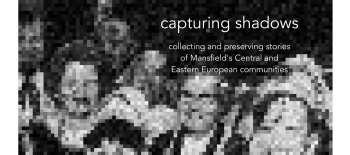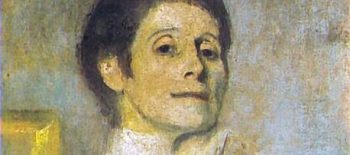From its films to its music and distinct regions, Poland is rich with cultural traditions. This might sound somewhat cliché, but – in all honesty – it’s pretty difficult to avoid coming face-to-face with a wide array of Polish traditional culture as you walk through the country’s towns. Neon signs still light up old-school train stations and shopping centres; commercial posters for art exhibitions, film screenings and music festivals are still rooted in the avant-garde aesthetics of the Polish School of Posters. In fact, part of what makes contemporary Poland so exciting is the re-imagining of old traditions with new creative forms. This is particularly evident in two young fashion retailers: Pan tu nie stał and Gryfnie.
Pan tu nie stał – textiles and irony in central Poland
Łódź is a curious city. It has a diacritic-heavy name that leaves it mostly mispronounced by English speakers. The etymology of its name is unknown, but means ‘boat’ in modern Polish, which is innocent enough until you realise that Łódź is landlocked, right in the centre of Poland, without any rivers or lakes in sight. It’s home to Poland’s national film school and boasts a number of famous connections – Maksymilian Faktorowicz (otherwise known from your lipstick as ‘Max Factor’) grew up nearby and apprenticed in the city; the author of The Witcher fantasy book series, Andrzej Sapkowski, was born, studied and resides there; director David Lynch has a long-term relationship with Poland, but first fell in love with Łódź’s post-industrial decay.
If ‘post-industrial decay’ doesn’t sound like the kind of thing you’d fall in love with, you’re not alone: the first time I visited Łódź, the locals insisted on telling me that it really was a very ugly city and that I’d be better off in Poznań. Nonetheless, Łódź’s industrial past plays an important role in its cultural fabric. Under the Russian partition in the early-19th century, German and Jewish economic migrants flocked to the city and contributed to its growing textile industry. By the time Poland regained independence in 1918, industrialised Łódź had swelled to a multicultural population of around half a million. Fast forward to the post-communist 90s and the former ‘promised land’ was in decline, largely neglected by successive governments.
In 2006, Justyna and Maciek – two locals born around the early-80s – decided to spread their passion for Łódź’s textile heritage and Poland’s inventive design to a wider audience. They already had a large collection of posters, magazine covers and labels from the 60s onwards, and started to upload these to a blog. They soon began printing T-shirts featuring archaic yet nostalgic words, set against a background of Poland’s colourful design past. The popularity of these T-shirts snowballed into opening a store, Pan tu nie stał, first in Łódź and subsequently in Warsaw and Kraków. The name literally means ‘you weren’t standing here’ – an obscure phrase for English ears, but one that evokes fond memories of queueing for food at the delikatesy for the generation that remember the communist era.
If their shop’s name evokes the Polish People’s Republic, its owners are keen to emphasise that their designs are inspired by what happened before, during and after communism. One of their most popular designs simply features the common greeting cześć (‘hey’) in various typographies. Clothing often depicts iconic Polish personalities, such as 80s film franchise headteacher Pan Kleks or sci-fi author Stanisław Lem. There’s T-shirts mimicking the design of a 90s disco polo pop music cassette and leggings emblazoned with home-grown Polish mustard jars.
For me, Pan tu nie stał represents the best of the traditional design that inspires it – it’s bold, with a touch of irony, and is 100% manufactured in Łódź.
Gryfnie – Silesian modernity and beauty
At first sight, Gryfnie bears a lot of resemblance to Pan tu nie stał – it sells a range of clothing and home items, with a clear focus on distinct design and prominent words. But that’s where the similarities end. While Pan tu nie stał was conceived out of a love for past and present Polish iconography, Gryfnie was born of an altogether different cause: the Upper Silesia region. If you’ve read my previous blog post about the town Katowice, you’ll know all about Silesia’s mining history and linguistic dialect. If you haven’t, it’s enough to say that this southern region of Poland has historically been the country’s coal mining centre and – as a result of belonging to both Poland and Germany across its lifetime – has developed a Silesian dialect that is indecipherable to the rest of Poland.
The Silesian dialect was what first inspired Gryfnie co-founder Klaudia Roksela to initially launch a Facebook page, soon followed by a website. Klaudia, a Silesia native, was frustrated by the typical media depiction of her region’s culture as an historical artefact, where locals were depicted as sombre aliens, and only people wearing outdated traditional dress would speak the dialect. Along with her husband Krzysztof, she decided to show Silesia in all its modern cultural glory. They designed a website showcasing Silesian food recipes and music, as well as featuring a Polish-Silesian glossary and interviews with the new generation of culturally-influential Silesians.
The website’s popularity soon blossomed into a webshop and physical store in Katowice, and so exists the Gryfnie brand as we know it today. Gryfnie, which means ‘beautiful’ in Silesian, has a strong focus on using the dialect across all of its designs. They include words such as szmaterlok (‘butterfly’) and phrases like dej kusika (‘give me a kiss’), accompanied by playful images that serve as a translation for the wider Polish public. Given the region’s mining history, a solid proportion of designs are dedicated to Silesia’s industrial culture, whether it’s a miner couple lovingly surveying the factory-rich horizon with the word grfynie beneath, or a large chunk of jagged coal alongside its Silesian equivalent, wongiel.
By drawing on the region’s unique linguistic and cultural traditions, the founders of Gryfnie have created a beautiful fashion archive that opens a stylish window to modern Silesia.




